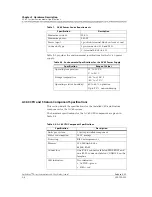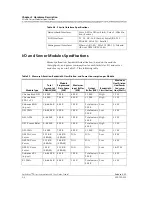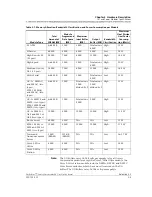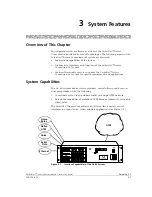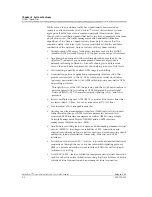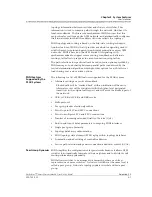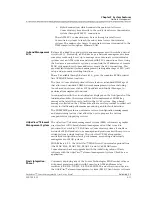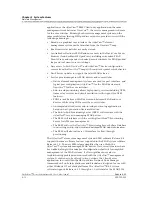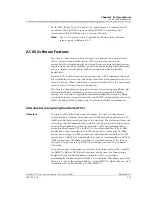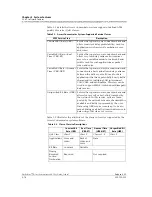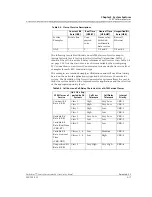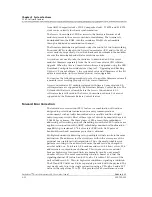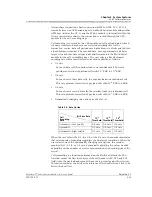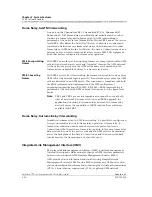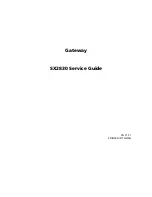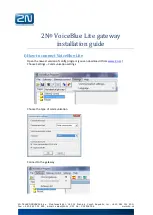
255-700-025
3-9
PacketStar
™
Access Concentrator 60 User Guide
, Issue 1
Release 6.3.0
Chapter 3 System Features
Network Management
The user part is the last seven bytes, and is reserved for end-system
identification (insignificant to the PNNI). The network part is the first 13
bytes, and is used to identify peer groups.
Each level in the PNNI hierarchy also is assigned a scope number. Similar to
an IP subnet mask, the scope specifies how much of the 13-byte network part
is common to the switch addresses at a particular level in the hierarchy. For
example, a scope of 72 (bits) masks the first 9 bytes of the network part as
being common in all switches at that level. Higher levels have shorter scopes
because they do not look as far into the NSAP; a level with a scope of 64
(masking the first 8 bytes) resides above a level with a scope of 72.
To make the best use of PNNI’s capabilities, network architects must pay
careful attention to the ATM addressing structure, allocating correct
addresses to switches at each level of the hierarchy.
Load balancing allows communications trunks connecting access and edge
switches to balance traffic between PNNI (dynamic source routing) and IISP
(static hop-by-hop routing) links. In addition to the existing parameters of
path and route selection, the PSAX devices can now consider the values of
available bandwidth and available cell rate associated with the interfaces.
Available bandwidth becomes the tiebreaker in calculating routes using
default parameters for both IISP and PNNI routing. Load balancing between
PNNI and IISP links, not available prior to this release, uses available
bandwidth more efficiently while strengthening the routing function.
The ATM Terminal Emulation Interface
Terminal Emulation is an application that follows an intelligent computing
device to mimic the operation of a dumb terminal for communications with a
mainframe or minicomputer. This is made possible by inserting special
printed circuit boards into its motherboard and/or special software. The
Multi-Serial module is the only Access Concentrator module that supports
this interface.
Network Management
The Access Concentrator system provides all the telecommunications
management network (TMN) functions applicable to the system. The AC 60
system (which contains network elements) can be managed in several ways
using a network element management system or network management
system. The Access Concentrator system software features a Simple Network
Management Protocol (SNMP)-compliant management information base
(MIB) that gives external management systems access to the Access
Concentrator system software.
The Access Concentrator system software supports the following options for
network management:
•
Serial port interface with a direct connection to a standard VT100
terminal emulator.


